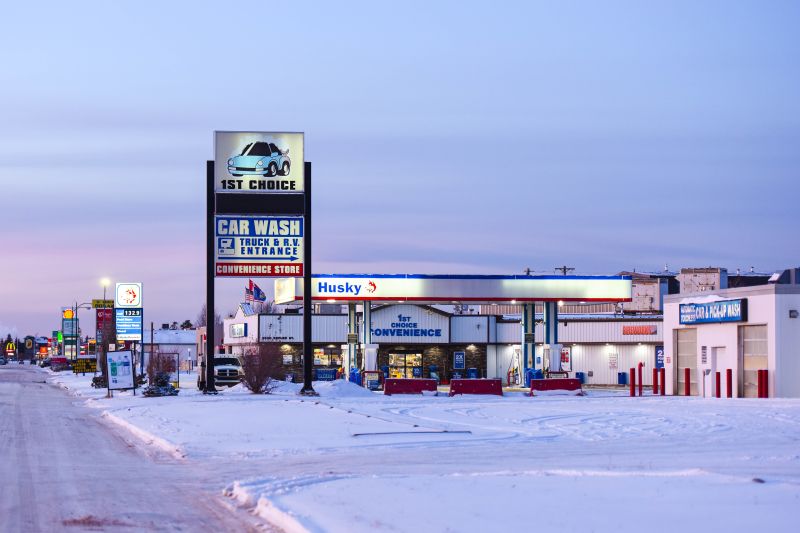
During last Monday’s meeting, Whitecourt Town Council voted unanimously to update Utility Bylaw 1511, which deals with stormwater infrastructure and facilities on private property, such as sump pits. The updated bylaw comes with an educational campaign to help relay to businesses the best practices for sump pit maintenance. The goal is to reduce the amount of grit in the system.
As grit accumulates in sump pits and eventually leaks into the sewer, things get plugged up. Town CAO Peter Smyl explained that keeping grit from reaching the treatment plant is critical. “(It’s about) trying to eliminate grit from our system, everything from in the pipes to the treatment plant. Part of the amendment is to go ahead and do a volunteer program, educational program, talking about it and providing some options for businesses to look out for, to make sure they are cleaning their sumps in their service industrial area.”
He said the bylaw amendment also gave them tools to use if a business isn’t complying. “One thing we want to ensure is that if people aren’t complying (is to have) the ability to go and do the inspections and fine if we have to, as a last resort.” The bylaw “expressly authorizes the Town’s designated officer to enter private property for the purpose of inspecting compliance,” read the Request for Decision (RFD) publicly available at the meeting. There is a penalty of $1000 should the designated officer not be allowed property access.
The bylaw was also updated to specify the type of materials used in sumps. “While many types and materials are accepted, it remains best practice to utilize Type K copper piping for service connections as it is less likely to leak and allows earlier detection if a leak does occur. This bylaw amendment specifies that the remainder of the service connection (from the curb stop to the building) also be made of the same material,” clarified the RFD.
Reducing the grit entering Whitecourt’s wastewater system will improve its performance, as it won’t be as bogged down, ultimately reducing odour; win-win. Deputy Mayor Paul Chauvet asked if the changes would also impact the fine clay that had been acknowledged as an issue previously. He wondered if both problems, grit, and fine clay, would be reduced by the changes.
Smyl explained that the grit broke down into fine clay over time and was very hard to eliminate, requiring an expensive process. The fine clay needs a particular product to settle into to be removed, which takes at least 24 hours. “When we did our testing, it was such a fine particle, the sand from the oilfield, that we thought we would educate and address it right at the source, which would help eliminate our problem,” said Smyl.
Having businesses understand the issue and be part of the solution is an easier and more cost-effective way to lower the amount of grit in the system and lower the occurrence of fine clay. The grit, being non-organic, doesn’t break down, leading to more issues the further it goes down the line.
Councillor Lapointe asked if Administration had received any preliminary feedback from business owners. “We initiated the (voluntary) program this year. We were able to work with three shops, one in west Whitecourt and two in the Hilltop area, which are the sources of the grit that we collect through the system. The feedback has been positive. There was one where it was clear that it was overfilled, and the feedback they gave us was basically, thank you for letting us know. It was well received. The next steps would be a more extensive program where we narrow down the sections that we would like to work with,” explained Juan Grande, Infrastructure Services Manager for the Town of Whitecourt.
“We just want people to make sure. That’s why you have a sump, a collection system. So, clean out your sumps, as you are supposed to be doing that,” said Smyl. He noted how often sumps are cleaned depends on usage. “It depends on the amount of washing you are doing in your bays. (But), you have to clean them out. Car washes do it a couple of times a day.”
Councillor Bill McAree asked where the “hammer” would be if a sump pit weren’t built properly. Smyl responded that the problem doesn’t usually lie with how a sump pit is made but that they can be modified over time, which is where less effective materials could be used. Materials other than Type K copper piping used for the service connections can leak, causing grit to get into the central system. “That would be part of the system to comply. One is to fix (the sump) if they modified it, and then number two is regular maintenance to get rid of the product. They have a number of options to take their grit for disposal,” said Smyl.
Councillor Tara Baker asked Administration if they felt compliance would be an issue. “I think because we haven’t really reminded people to do it, that people just haven’t gotten to it. It’s something (that should be) regular maintenance when they are washing down the floors or every Saturday to have someone go ahead and clean it. Like Juan indicated, when we approach people, they say, oh ya, we need to do that. Have they been doing it on a normal basis? Maybe not. So that’s what we are trying to say,” explained Smyl.
The hope is for the educational campaign and business visits to raise compliance rates from 30 percent to 70 percent. “That would sure help out our pipes and mechanical system at the treatment plant,” said Smyl. Council did all three required readings to update Utility Bylaw 1511, adopting the changes forward.







More Stories
Community spirit shines at large-scale youth baseball event
Birthday party chaos sung beautifully by Pumpjack Players’ youth in spring musical
Gearing up for another season of cars, cruising and camaraderie